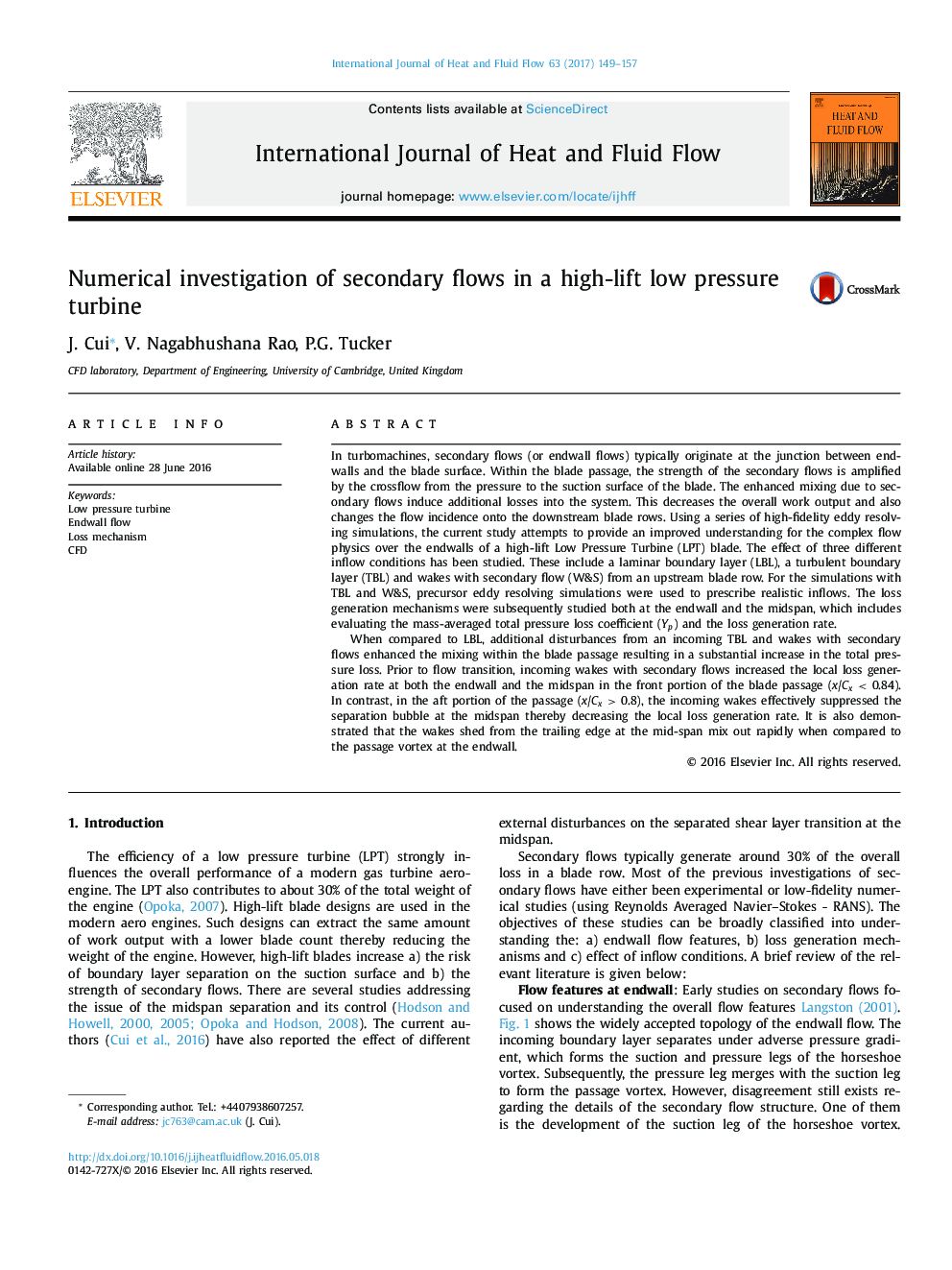| کد مقاله | کد نشریه | سال انتشار | مقاله انگلیسی | نسخه تمام متن |
|---|---|---|---|---|
| 4993303 | 1457616 | 2017 | 9 صفحه PDF | دانلود رایگان |
- Eddy resolving simulations are helpful in accurately capturing the endwall flow features.
- The total pressure loss coefficient increased substantially in the presence of a turbulent boundary layer and wakes with secondary flows.
- The presence of incoming wakes suppressed the 2D-separation bubble at the midspan thereby decreasing the loss generation rate by almost 40% at the trailing edge.
- Downstream of the trailing edge, the wake at the mid-span mixed out rapidly when compared to the passage vortex at the endwall. This results in a much more gradual decrease of the loss generation rate at the endwall relative to the steep decrease at the midspan.
In turbomachines, secondary flows (or endwall flows) typically originate at the junction between endwalls and the blade surface. Within the blade passage, the strength of the secondary flows is amplified by the crossflow from the pressure to the suction surface of the blade. The enhanced mixing due to secondary flows induce additional losses into the system. This decreases the overall work output and also changes the flow incidence onto the downstream blade rows. Using a series of high-fidelity eddy resolving simulations, the current study attempts to provide an improved understanding for the complex flow physics over the endwalls of a high-lift Low Pressure Turbine (LPT) blade. The effect of three different inflow conditions has been studied. These include a laminar boundary layer (LBL), a turbulent boundary layer (TBL) and wakes with secondary flow (W&S) from an upstream blade row. For the simulations with TBL and W&S, precursor eddy resolving simulations were used to prescribe realistic inflows. The loss generation mechanisms were subsequently studied both at the endwall and the midspan, which includes evaluating the mass-averaged total pressure loss coefficient (Yp) and the loss generation rate.When compared to LBL, additional disturbances from an incoming TBL and wakes with secondary flows enhanced the mixing within the blade passage resulting in a substantial increase in the total pressure loss. Prior to flow transition, incoming wakes with secondary flows increased the local loss generation rate at both the endwall and the midspan in the front portion of the blade passage (x/Cx < 0.84). In contrast, in the aft portion of the passage (x/Cx > 0.8), the incoming wakes effectively suppressed the separation bubble at the midspan thereby decreasing the local loss generation rate. It is also demonstrated that the wakes shed from the trailing edge at the mid-span mix out rapidly when compared to the passage vortex at the endwall.
Journal: International Journal of Heat and Fluid Flow - Volume 63, February 2017, Pages 149-157
